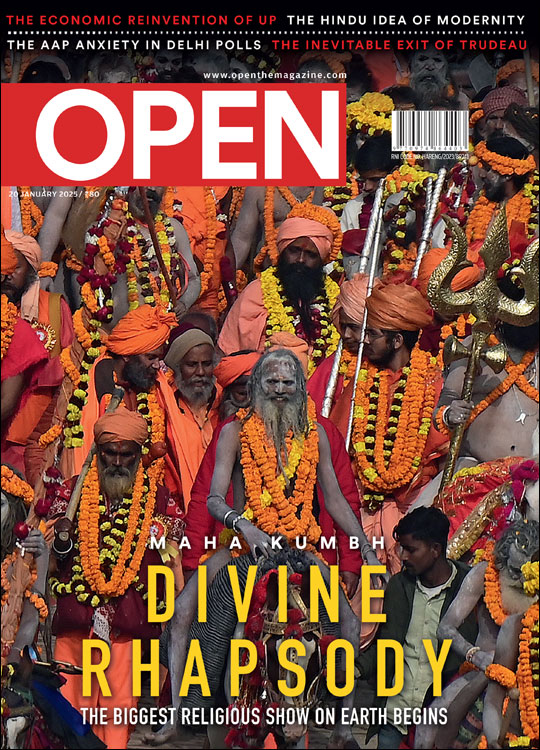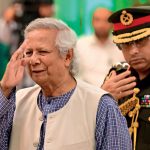Seed Capital
Meet India’s sperm donors
 Lhendup G Bhutia
Lhendup G Bhutia
 Lhendup G Bhutia
Lhendup G Bhutia
 |
09 May, 2012
|
09 May, 2012
/wp-content/uploads/2015/11/sperm-1.jpg)
Meet India’s sperm donors
In the film Vicky Donor, Annu Kapoor plays Dr Baldev Chaddha, a fertility specialist whose sperm bank in New Delhi is close to shutting down because the quality of his donors’ samples is just too poor to impregnate patients. That’s when Vicky Arora, played by Ayushmann Khurrana, comes in. A good-for-nothing lad who lives off his mother’s beauty parlour, his sperm samples rejuvenate Dr Chaddha’s flagging business. Vicky discovers that the quick buck assured by his virility beats the tedium of managing his uncle’s garment store: every single shot of semen fetches him a wad of Rs 500 notes. And this is how Vicky Arora becomes Vicky Donor and starts wanking for a living.
For all the earnest talk of the film’s intention to cast light on an industry cloaked in secrecy and ridden with stigma, its portrayal of the sperm donation business is but a caricature. The industry does exist, but there are no wads of cash being dispensed, donors don’t hang out at Costa Coffee outlets, and they certainly don’t earn enough to buy cars. Indian donors are mostly outstation students living in cramped hostel rooms, sweating to pay their bills and embarrassed by their need to encash what everyone else flushes down the drain. For some donors, it may be pocket money, but for most it’s the room rent or phone bill. And turning donor entails putting their pride at risk. Every commercial ejaculator must pass a strict selection test. Only the best are signed on. The rejects return home unpaid and dejected.
One such student at an Aurangabad engineering college who would rather not be named—let’s call him Donor A—submitted himself to the ‘sample test’ a year-and-a-half ago. Whatever its outcome, he knew, his life would not be the same: he would either have to lead a clandestine existence as a sperm donor, or come to terms with his compromised manhood. His dilemma was worsened by the fact that all three of his hostel roommates had just passed the test and turned donors. “If I had failed the test,” says the 22-year-old, “I don’t know which would’ve been worse—the fact that I wasn’t man enough to become a father, or the fact that my roommates would know of it.” To his relief, he made the grade and now has a secret income he won’t brag about.
It has liberated Donor A. Every ejaculation earns him Rs 170, and he now pays his own hostel fees without having to depend on his father, a clerk working at the animal husbandry department in Parwadi, their native village. But it’s not something he would like to do forever. “It helps me pay my bills,” he says, “And I’m happy that it helps people who are infertile. But once I’m through with college and get a real job, I’m out.”
Quitting is not always easy, at least not entirely. Take the case of Gajanad Bhosale, who was a sperm donor for two years before he became a sperm procurer. Originally a resident of Ahmednagar, he got into the act in 2005 while he was a student at Dr Babasaheb Ambedkar College of Arts and Commerce in Aurangabad. Once he got married, however, he had to stop. Banks would demand sexual abstinence for three days before every squirt, and he found this a difficult condition to meet. But Bhosale did the next best thing. He started canvassing samples for the bank, with each success earning him a commission. So far, he has got over 60 students to turn donors and believes he has perfected his sales pitch. “Whenever I try to convince any student, I say, ‘Whatever you do at home, do it at the clinic, and you’ll get paid for it’,” he says.
“When I came to Aurangabad,” says Bhosale, now a portly 34-year-old with a scraggly beard, “I wanted to have an important job in a company, sitting in an office, deciding important matters. What I found was an equally important job. It’s just that it doesn’t take place in an office but inside a bathroom.” Now that summer vacations are on and there are few students around to rope in, he has begun working for his sperm bank’s founder, Dr Pramod Bajaj, in yet another capacity: as his driver.
If sperm donors are drawn mostly from the ranks of India’s underprivileged, sperm recipients are invariably the well off. They have the money, and, as Dr Aniruddha Malpani puts it, they typically want samples of rich young donors who happen to be exceptional students, great sportspersons and awesome lookers. “At best, we tell them, we can match a few specifications—the height, weight, colour of the eyes, skin and hair,” says Dr Malpani, a well-known fertility specialist who runs a popular clinic in south Mumbai, “For anything more, India is not the place to be.”
For an infertile husband, opting for a donor is perhaps the easiest and cheapest means of attaining fatherhood, but it is almost always the last resort. Dr Hrishikesh Pai, a senior IVF (In Vitro Fertilisation) consultant at Fortis and Lilavati hospitals in Mumbai, explains this with the example of a couple he has been advising for the past two months. The husband, a 26-year-old who works with an infotech firm, had undergone radiation therapy five years ago for lymphoma (a type of cancer that affects lymphocytes), and while it cured him of his ailment, it also affected his semen quality. Since he himself is rich, he opted for ICSI (Intracytoplasmic Sperm Injection), an expensive IVF procedure by which doctors retrieve spermatozoa from the husband’s semen sample and inject a live sperm into an egg obtained from the wife’s ovaries. Often, multiple eggs are used, and an embryo thus formed is then transferred to the wife’s uterus. At Rs 60,000-1 lakh per attempt, it costs much more than artificial insemination by a donor sample, which takes no more than Rs 10,000. “The couple was desperate for a child, but the husband wasn’t willing to opt for a donor sample,” says Dr Pai, “He wanted a child of his own.” In this particular case, however, ICSI failed—no embryo was formed.
A month later, the couple visited the doctor again. “They were willing to opt for a donor this time, but, as is usually the case, they wanted it done in complete secrecy,” says Dr Pai, “The couple hadn’t even confided in their parents, and they wanted a sample from a donor who looked as close as possible to the husband.” A sample of a fair-skinned, dark-haired donor who is 5 ft 10 inches tall and has brown eyes has just been ordered from a sperm bank for the couple. Secrecy, of course, is maintained at both ends. Donors must sign a contract giving up all claims to the prospective child, and are even barred from trying to find out who the child may be.
Donor A has also made another pact—with his roommates. None of them is to ever disclose the others’ identities as donors. This lets him go about his donation routine without worrying too much. Every three days, he catches a 7.30 am bus at a stop near his hostel and reaches the bank at 8 am, just in time for it to open. With fewer people around, he figures, his risk of being seen is that much lower. But the lure of Rs 170 per ejaculation keeps him coming.
Compared to what donors in the US make, however, that’s a pittance. A donor with a PhD can earn as much as $500 a pop in America, and a man with just a college degree, about $60. In India, the biggest sums that can be earned are in metropolitan cities.
Donor B, a 21-year-old engineering student of a college in Mumbai’s Matunga suburb, gets a relatively respectable Rs 500 for every sample, and in the past six months, he has given as many as 30 samples. Like most donors, he is too young to bother about the ramifications of what he is doing. “I just go there, do my job, and take my money. I don’t think of it emotionally. It has never occurred to me that ‘my children’ might be all over the place,” he says, when asked if he wonders about the possibility of having a gaggle of biological offspring. What he is sure about is his need to hide his identity as a donor. This is of day-to-day relevance.
Confidentiality is not always about feelings of shame or fears of a stigma. Making such a disclosure even (or especially) to loved ones can throw one’s life into turmoil. Ask Bhosale. After years of hiding his past from his wife—and having had two children with her, aged four and three—he finally decided to come clean and let her know a couple of years ago. “She was very upset,” he recounts, “She did not speak to me for three days.” What he had done, she felt, was akin to infidelity. “On the fourth day, she came to me,” Bhosale says, with a laugh, “She had calmed herself down by then. She forgave me and asked me to get the children so that we could all live together.” The privileges of prolific paternity did not go that far, he had to tell her. Those kids were not really his. He had only been paid to ejaculate.
By global comparison, India’s fertility treatment industry is still in its infancy. Reliable figures are hard to come by, but it’s safe to assume that it’s only a tiny fraction of the $3.3 billion industry in the US, where sperm banks alone rake in an estimated $75 million each year (they also export thousands of vials to more than 60 countries). Last year, America’s largest sperm bank, California Cryobank, recorded sales of $23 million.
Some observers had expected globalisation to put India’s own industry on a similar success path. This has not happened, but there has been at least one major attempt at globalising the domestic business. In September 2008, Mumbai saw the opening of the country’s first ‘international sperm bank’: Cryos International. Part of the world’s largest international network of sperm banks, its Mulund outlet was like nothing donors had experienced before. Instead of dingy toilets for them to shoot their loads into little containers, it had a state-of-the-art ‘Masturbatorium’—a bedroom whose walls were adorned with images of nude women, its central attraction being a porcelain figurine of a woman in a blue-and-red bikini. The Masturbatorium also had a range of other ejaculatory aids, from glossy magazines to ‘reliable’ DVDs that could be played on a home theatre system. All this, to attract “the cream” of donors, in the words of Dilip Patil, managing director of Trivector Group, the firm that had set up the bank in alliance with Cryos International.
The project got off to a heady start, with Cryos using an elaborate screening process to pick 70 donors—mostly young professionals and college students, many of them from IIT-Powai. They were to be paid Rs 1,000 a pop for their samples. These, by the bank’s plan, would either be ordered by India’s top IVF clinics (at a price of Rs 3,500 per sample), or be shipped overseas for the use of foreigners and non-resident Indians who wanted nothing but the ‘best’ Indian DNA. It was a global business now, went the spiel, and all infertility doctors had to do was log on to the bank’s website, browse through its catalogue of donor details (height, weight, blood group, medical history, complexion and colour of eyes and hair), and place orders for their patients.
On 30 September last year, Cryos shut shop in Mumbai. According to Dr Arun Patil, co-founder of Medilabs, a successful sperm bank in the city, Cryos was unable to compete with local sperm banks that offered cheaper samples. Not just that, its export model got nowhere. “There is plenty of demand for good Indian sperm from Indians settled abroad,” he says, “But despite requests, the Government refused to allow its export.”
Other banks have not fared much better. “Sperm banks are not feasible,” says Dr Milind Mirashi, who started a sperm bank called Cytochem in Pune in 1992 alongwith Dr Pravin Thakar, “There is hardly any money to be made, and donors are extremely irregular, given how people view this as a ‘dirty’ job.” Cytochem shut down three years ago.
It is a taxing business. Samples are first screened for contagious diseases like HIV and Hepatitis B and C, and then assessed for sperm motility, morphology and concentration. After this, samples are quarantined in liquid nitrogen for six months. Post-quarantine, the samples are screened again for diseases. Only then are they ready for release. All this takes both time and money.
So how do India’s surviving sperm banks stay in business? Many have diversified into—or allied with those in—related fields of business. For example, Sperm Processor, where Donor A donates his samples, now makes instruments used for semen handling and analysis. The company sells Sperm Warmer, a semen thawing device, and Sperm Meter, which is used in semen analysis.
Later this year, it expects to venture into cattle sperm banking. This will make it India’s first commercial veterinary sperm bank.
Medilabs, which has seven other centres across the country, on the other hand, provides IUI (intrauterine insemination) lab services like semen analysis and semen washing. “Running just a sperm bank is not profitable,” says Dr Arun Patil, “We operate one along with our lab services—so that everything connected with male infertility can be dealt with here.”
Also, both Sperm Processor and Medilabs employ an effective method of ensuring donor regularity. They have a network of student donors on their rolls who operate a donor-get-donor scheme on college campuses. It keeps the chain going.
Perhaps the box office success of Vicky Donor will make that task easier. But would-be donors, encouraged by the film, need to be forewarned that it’s not nearly as exciting as they might imagine. In the film, Vicky Arora is handed a number of magazines and DVDs to help stimulate him. The truth is, neither Medilabs nor Sperm Processor offers such aids. Not anymore.
Medilabs did away with its stack of magazines many years ago, after the centre’s neighbours complained about the ‘wrong’ culture it was thought to be spawning. Sperm Processor never kept them. “In 1992,” Dr Bajaj recalls, “I used to work for another sperm bank called Cryogenie in Delhi. We used to keep such magazines in the donor room then. Two months after the bank started, when I visited the donor room, I was in for a shock.” The only trace left of the magazines was their covers. Their inner pages had been torn off and stolen.

/wp-content/uploads/2025/01/Cover_Kumbh.jpg)











More Columns
What does the launch of a new political party with radical background mean for Punjab? Rahul Pandita
5 Proven Tips To Manage Pre-Diabetes Naturally Dr. Kriti Soni
Keeping Bangladesh at Bay Siddharth Singh